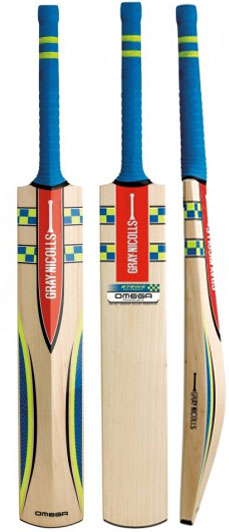It can be difficult to know which bat is right for you or your family.
Many factors play a part in the decision making.
For example, when starting out in cricket it may be best to chose an entry level bat. For beyond entry level, it may be best to take the “next step up”.
Then there is the question of what size, and obviously price is important.
A cricket bat is made from either Poplar, Kashmir or English Willow
Poplar. Is great for family fun, but not suitable for club cricket.
Kashmir Willow. This is great for entry level bats.
English Willow. Is the best wood for cricket bats. Grade on grade, it is superior to Kashmir. It is generally more expensive too.
Willow (English or Kashmir)
Cricket bats have a grade, depending on the quality of the wood. They take into account the wood grain, finish, colouring, and whether any blemishes exist. Level 1 is the best grade, down to Level 5. When you buy a bat, you should chose the best grade for the money you want to spend. This is because the best grade bat will normally out-perform and outlast a lower grade bat. If you have two closely matched bats, chose the bat that has less blemishes on the face.
Kashmir Willow
Kashmir is generally a heavier wood than English. Junior Kashmir bats are best with a soft cricket ball. You can use that bat with a hard ball, but the bat won’t perform as well as English Willow, and it won’t last as long. But Kashmir is popular with parents of young children, because it is affordable and as the children grow- bats can affordably be replaced.
Lots of Kashmir bats are made “ready to play” from the factory. The wood has been pressed at the time of manufacture and a protective sticker has been stuck to the face, and a rubber guard glued to the bat toe. Fibreglass tape may even be used on the edges. The bat can be used immediately against a soft ball in club cricket. If facing a hard ball in club cricket, the bat needs to at least be used in the nets against an old worn cricket ball. (Refer to our separate blog on bag maintenance)
English Willow
English is what most players want to use. The wood is lighter than other types, and can send the ball to the boundary more often. A good English Willow bat well looked after, can last many years. If facing a hard ball in club cricket, particularly senior cricket, you really need an English Willow bat.
Sometimes these bats are “ready to play”, because they have been pressed or knocked-in at the factory. They will likely have a protective sticker on the face, a rubber guard glued to the toe, and perhaps fibreglass tape applied to the edges. That has saved you a bit of expense, but as you will likely be facing a hard cricket ball, the bat still needs to be knocked in or used in the nets against an old worn ball. (Refer our separate blog on bat maintenance)
What size and weight bat do I chose?
Once you have decided on what wood you want, you now need to decide what size bat you need.
There is a height and size guide at the bottom of this blog, but everyone is different in height, strength, and playing style. Ideally you want to be able to handle the bat in person.
Nowadays bats have large edges with a sweet spot on the face near the base or middle of the bat. The sweet spot is where you want to be hitting the ball. You will notice on the back of the bat, a swell or spine profile. The wood either side has been scalloped out to remove weight. The depth of this swell or spine profile is what helps generate power through the sweet spot.
Through the generosity of Kookaburra, we have an illustration in this blog to help show these parts of the bat.
The placement of this sweet spot and the swell or spine profile, affects the pick-up weight of a bat. Use the height and size guide to get an idea of what size you need, and then handle the bat in the shop to see if it feels right. It is not so important how heavy it is. What is important is how natural it feels to carry the bat and how it feels on pick-up.
Size and Height Guide
1 for players up to 4' 3"
2 for player up to 4' 6"
3 for players up to 4'9"
4 for players up to 5'
5' for players up to 5' 3"
6 for players up to 5' 5"
Harrow for players up to 5'7"
Short Handle 5'8" +


